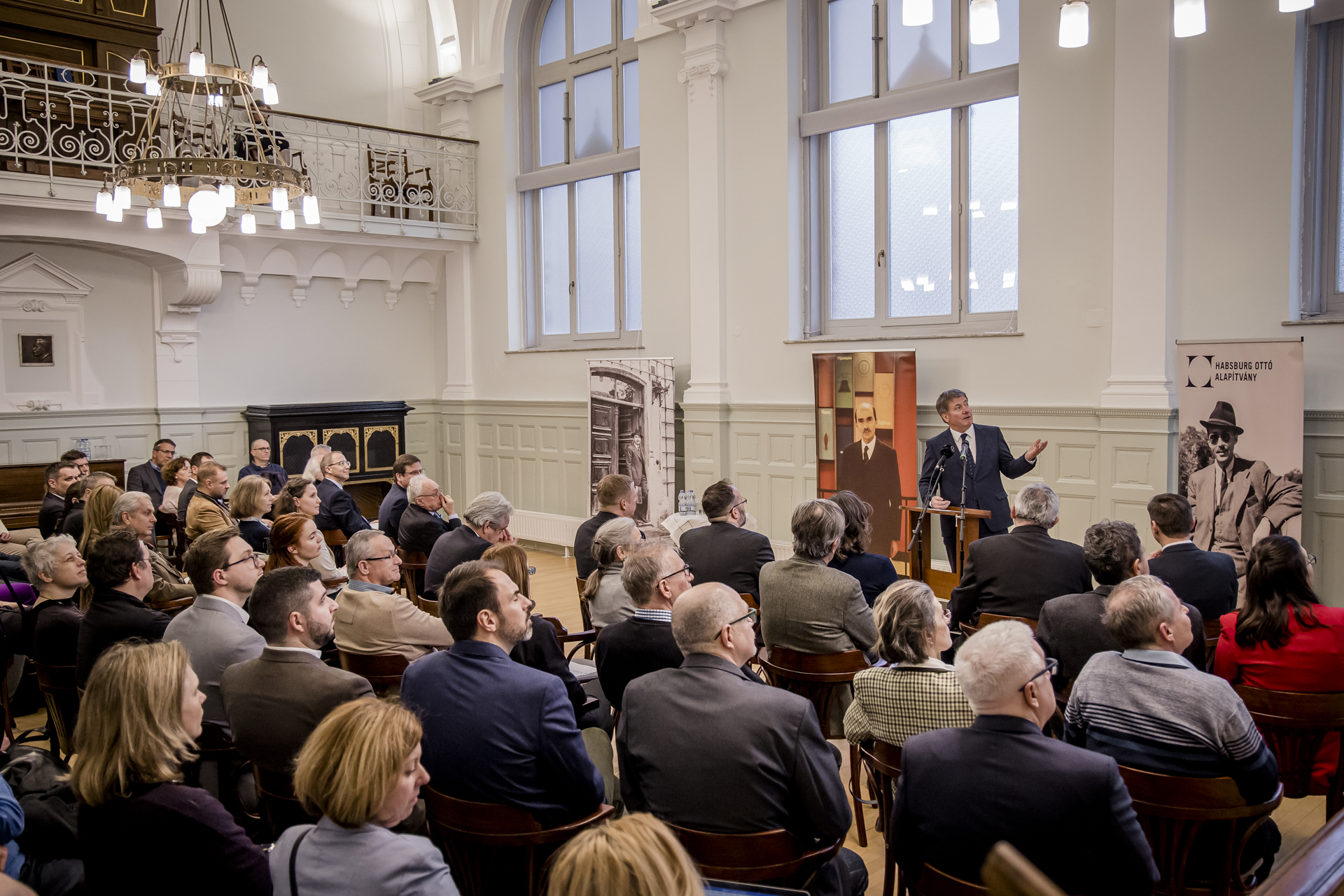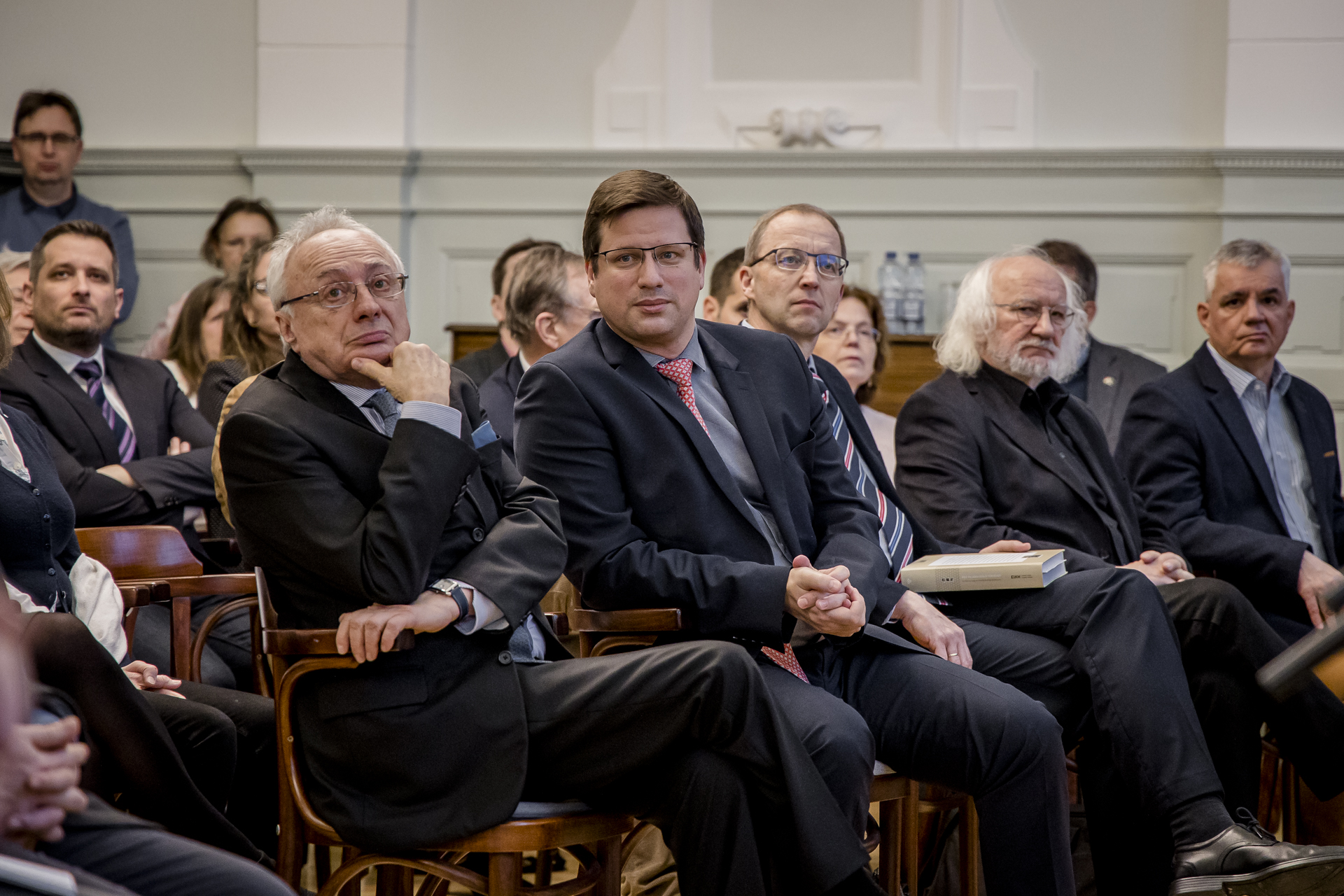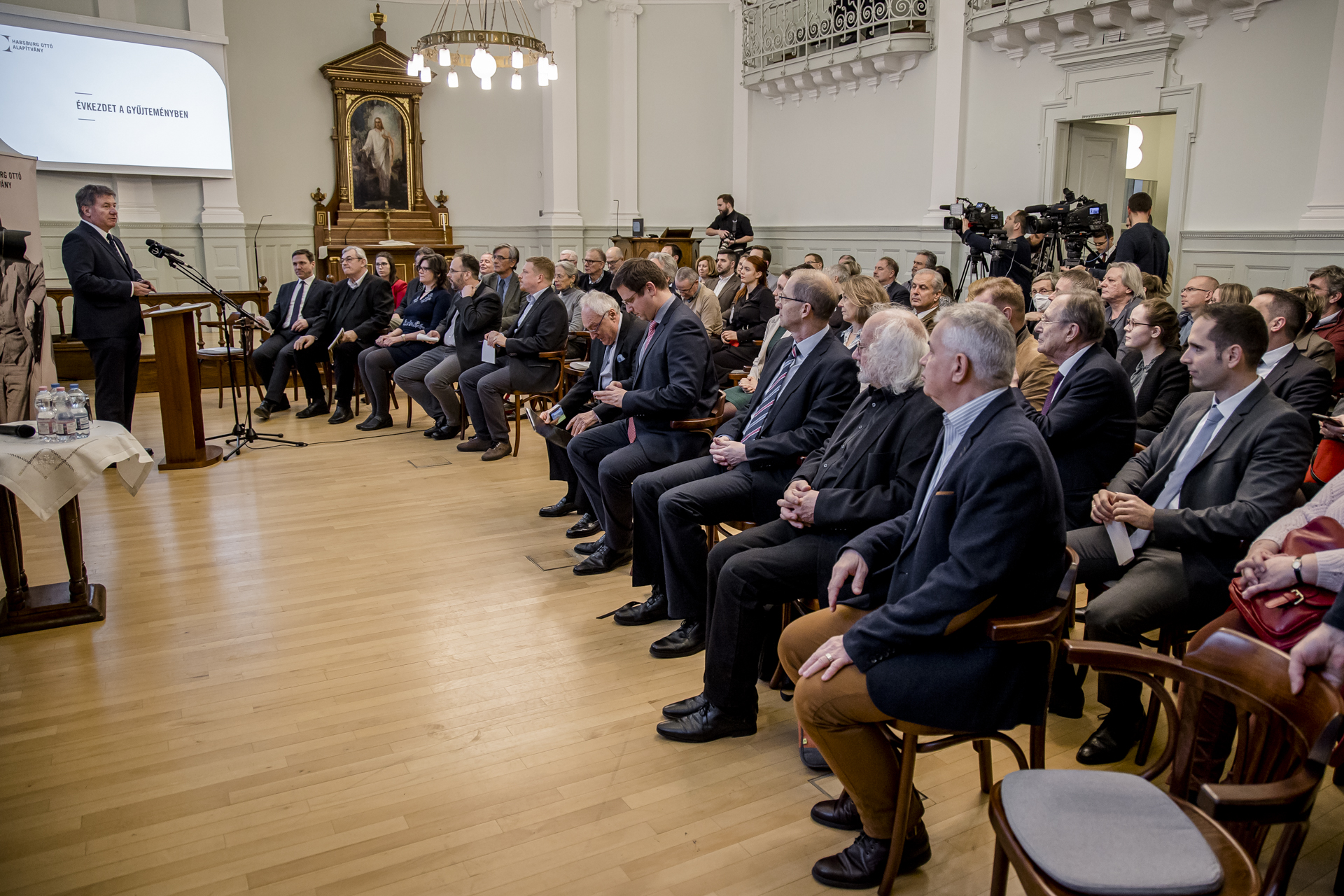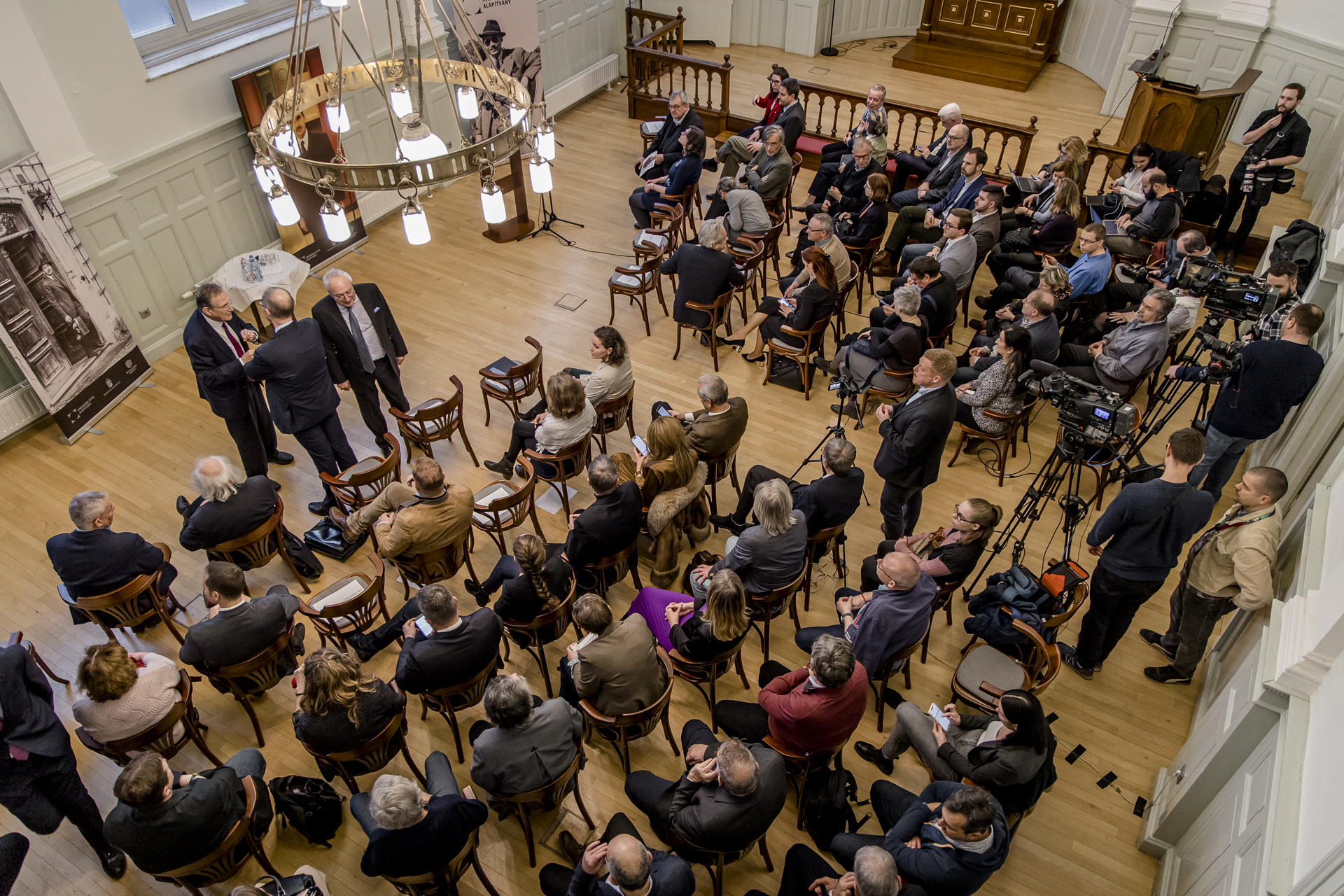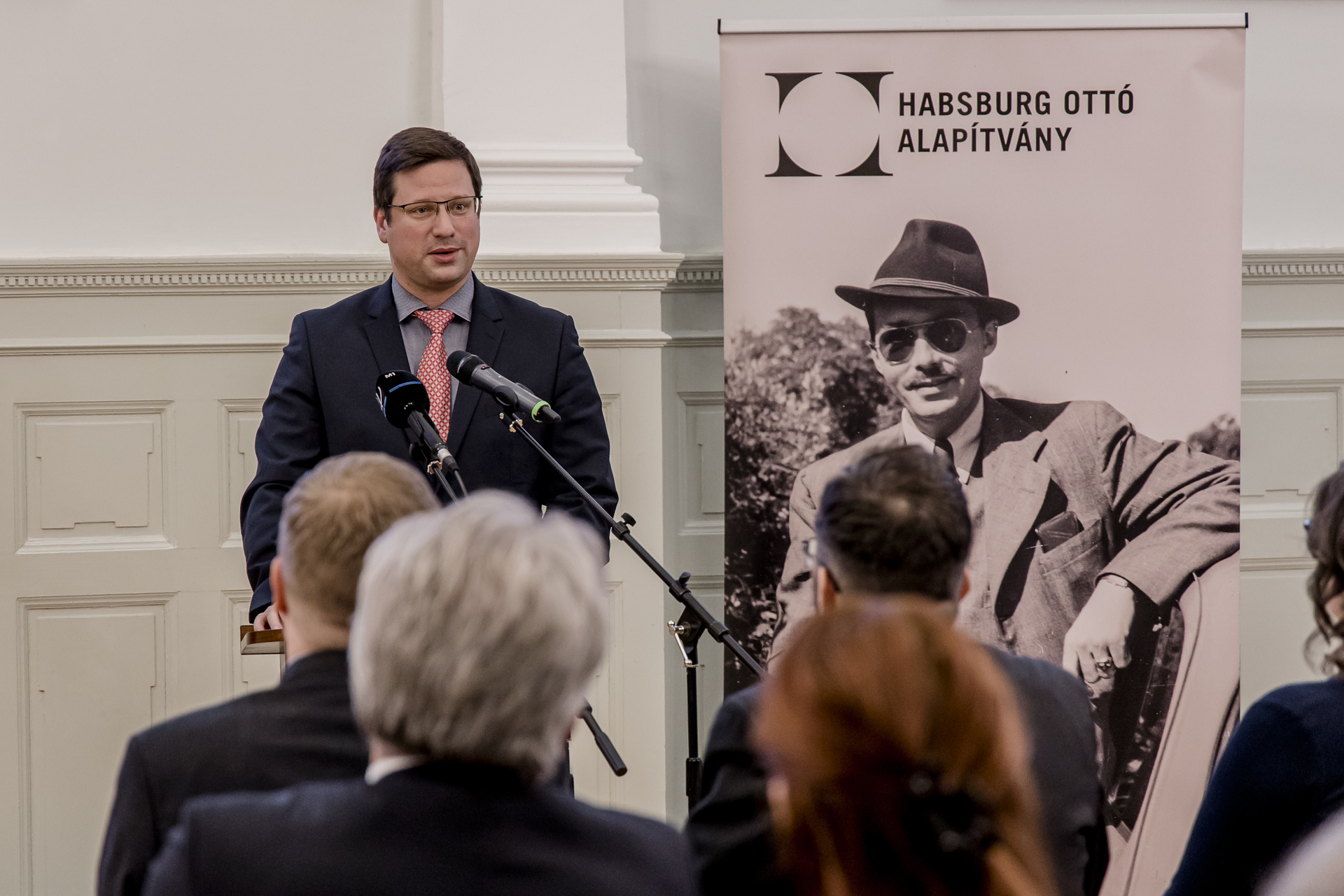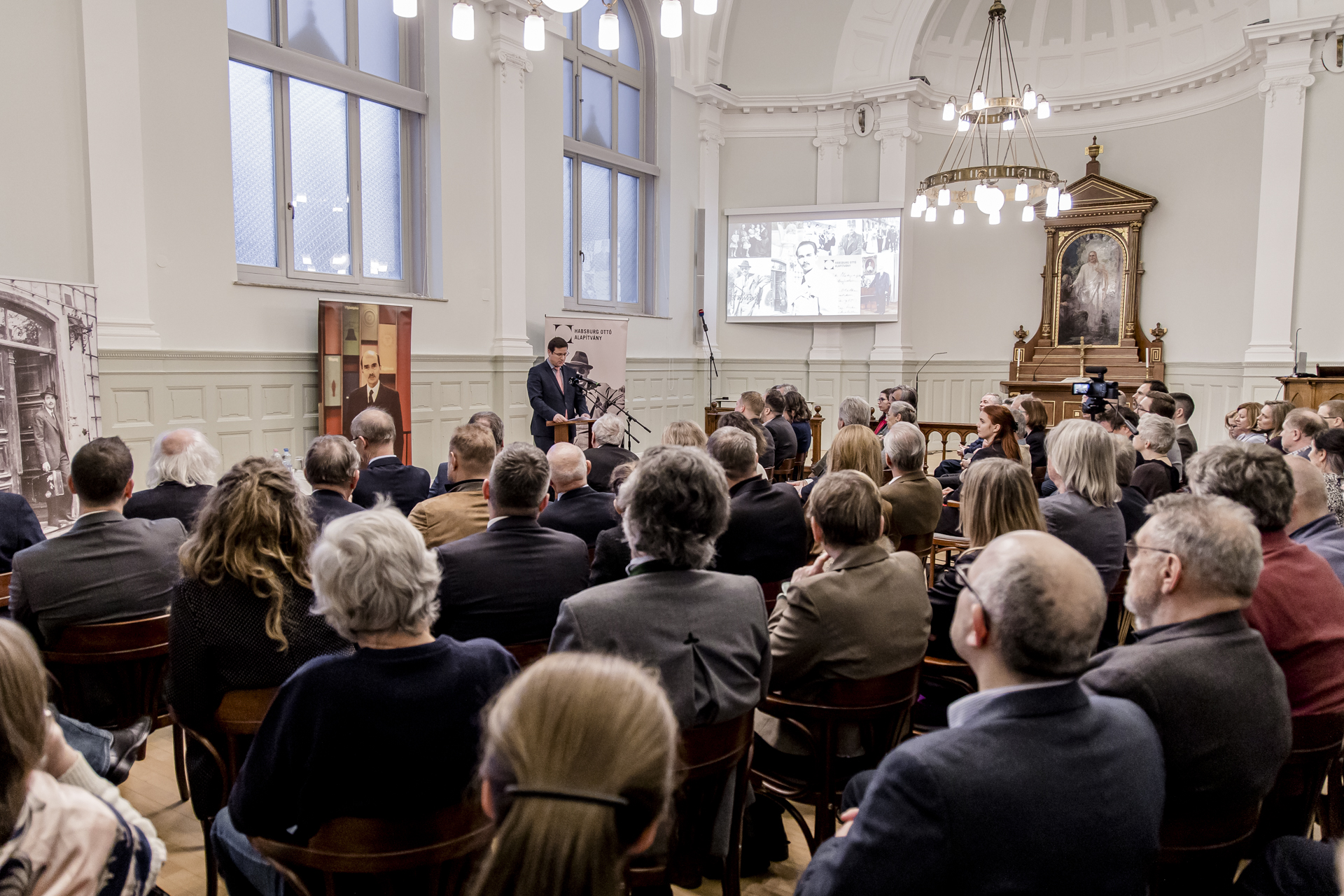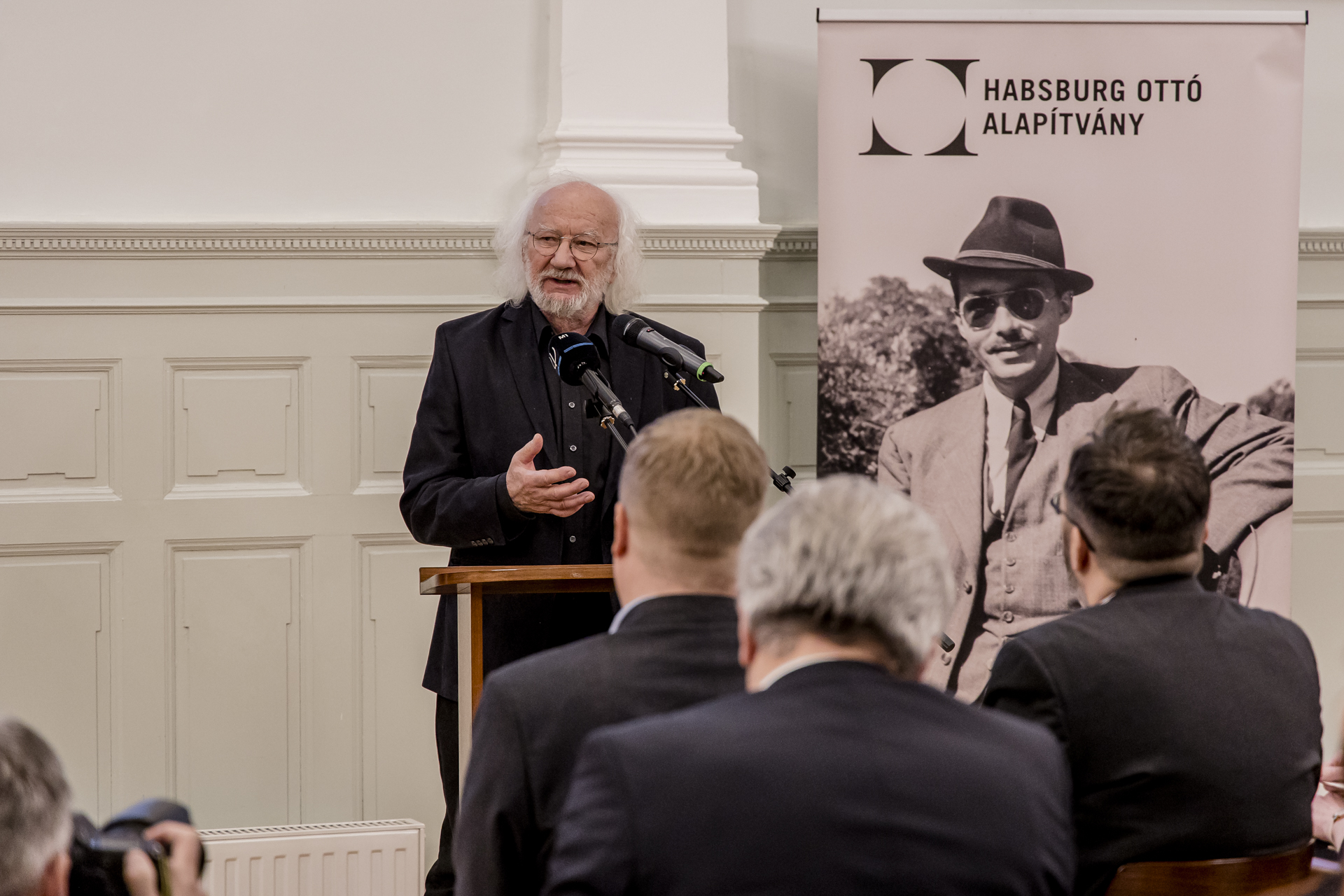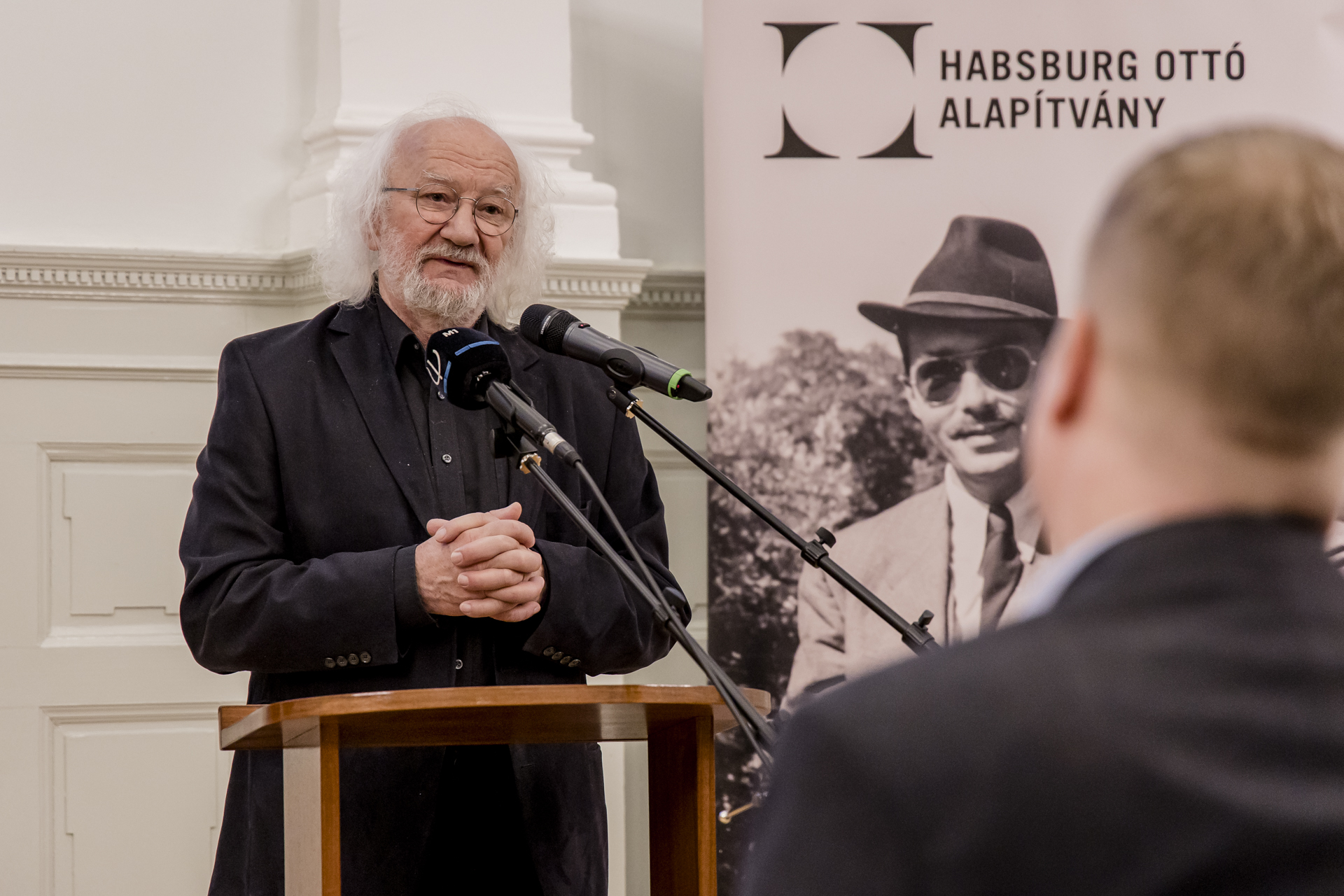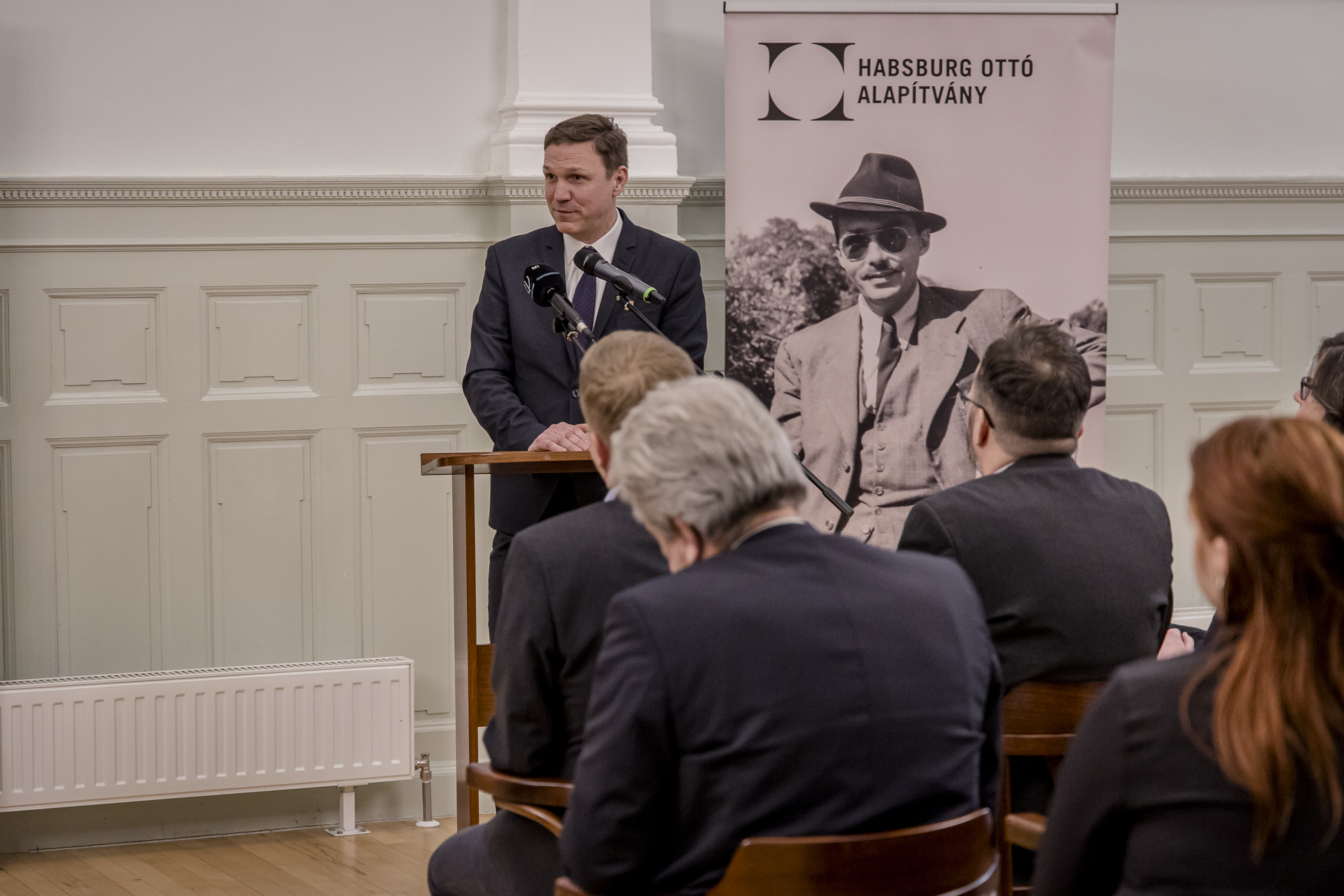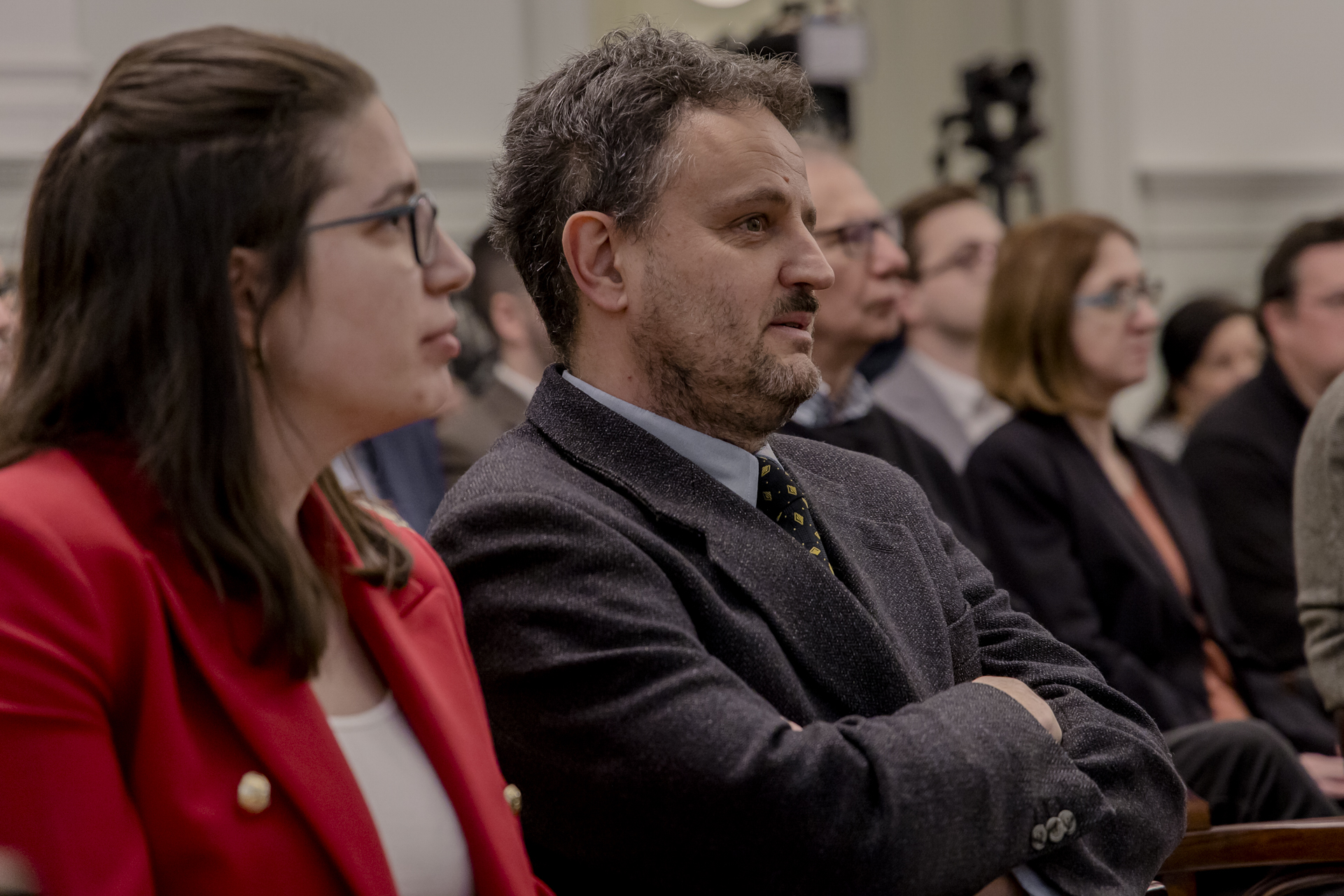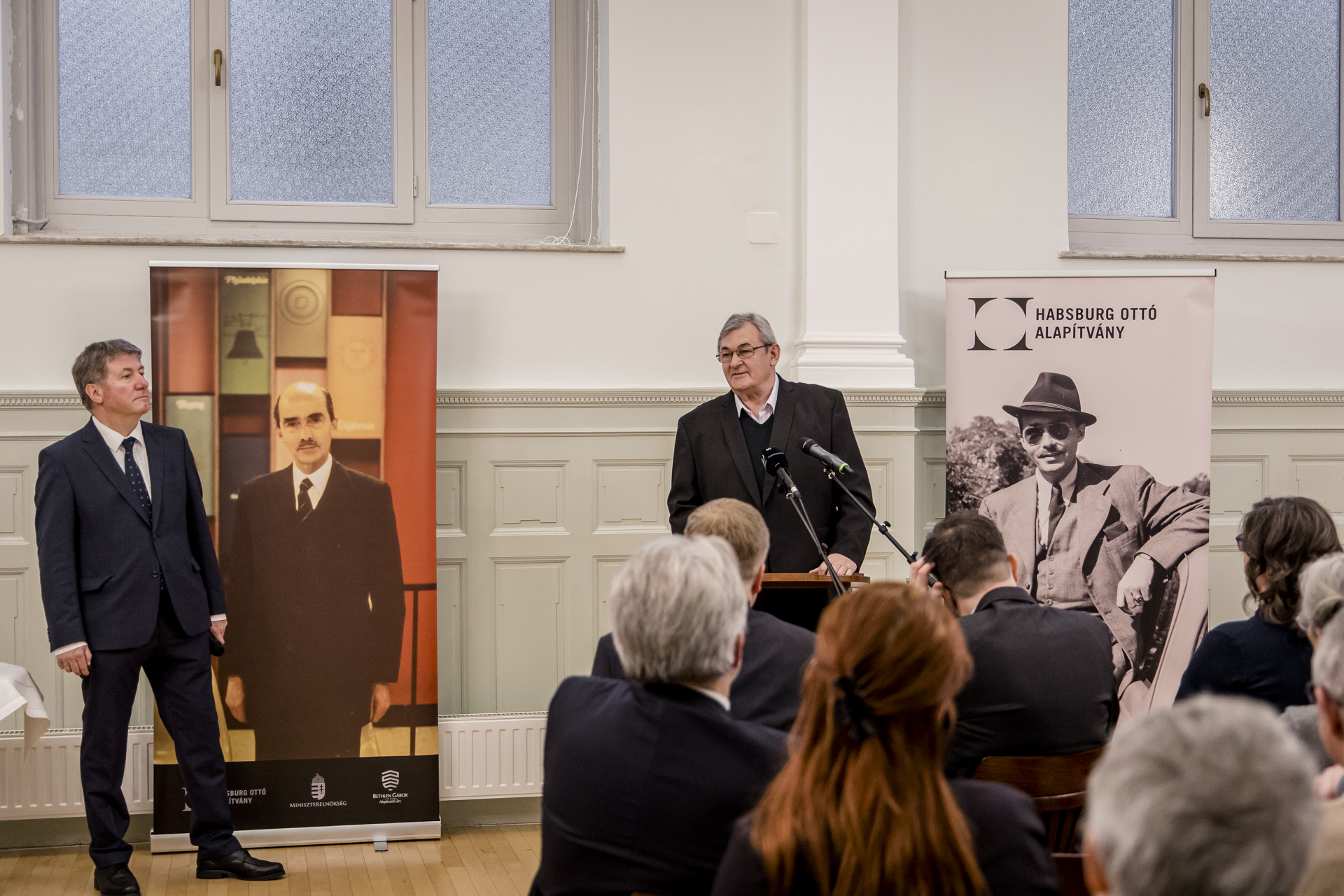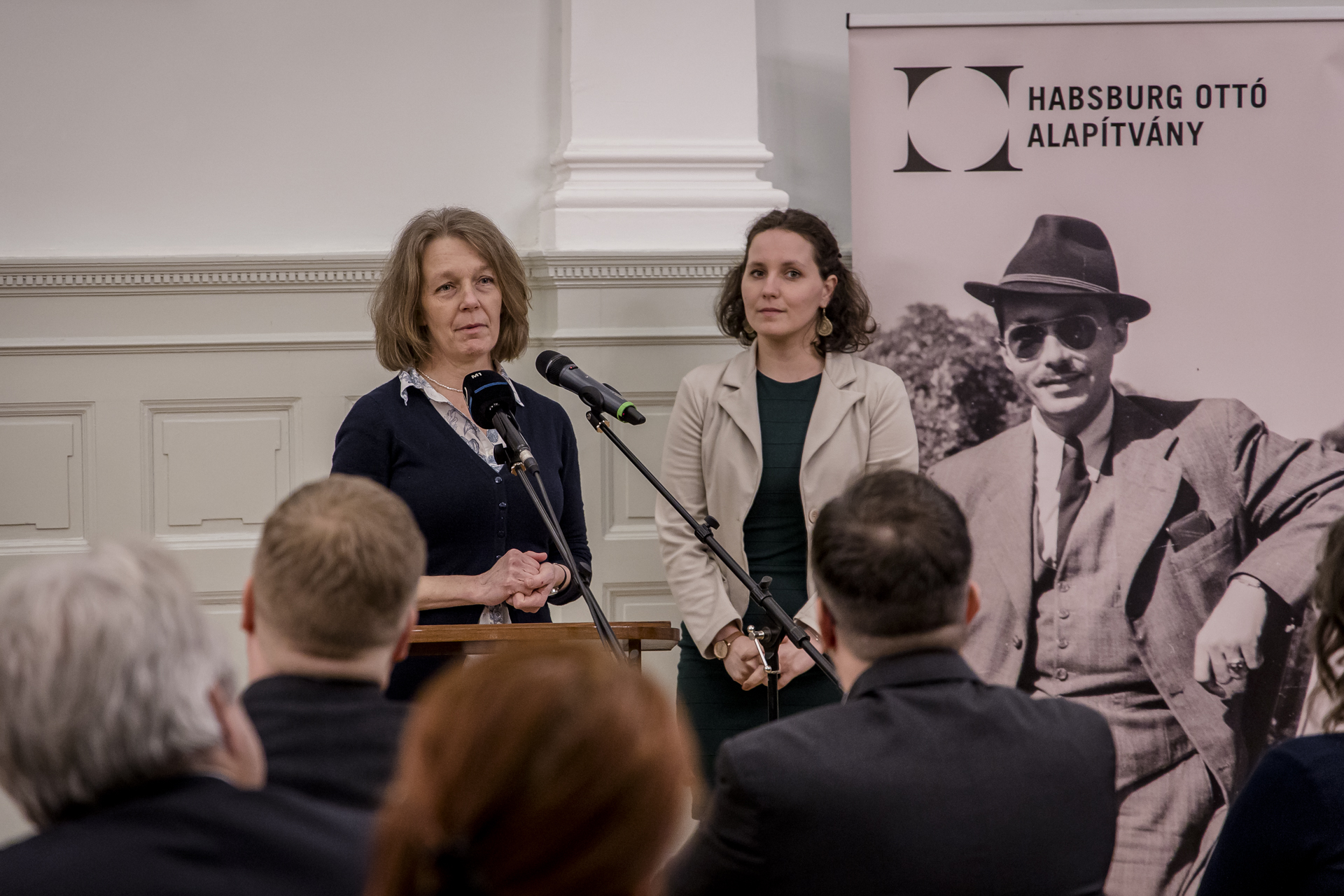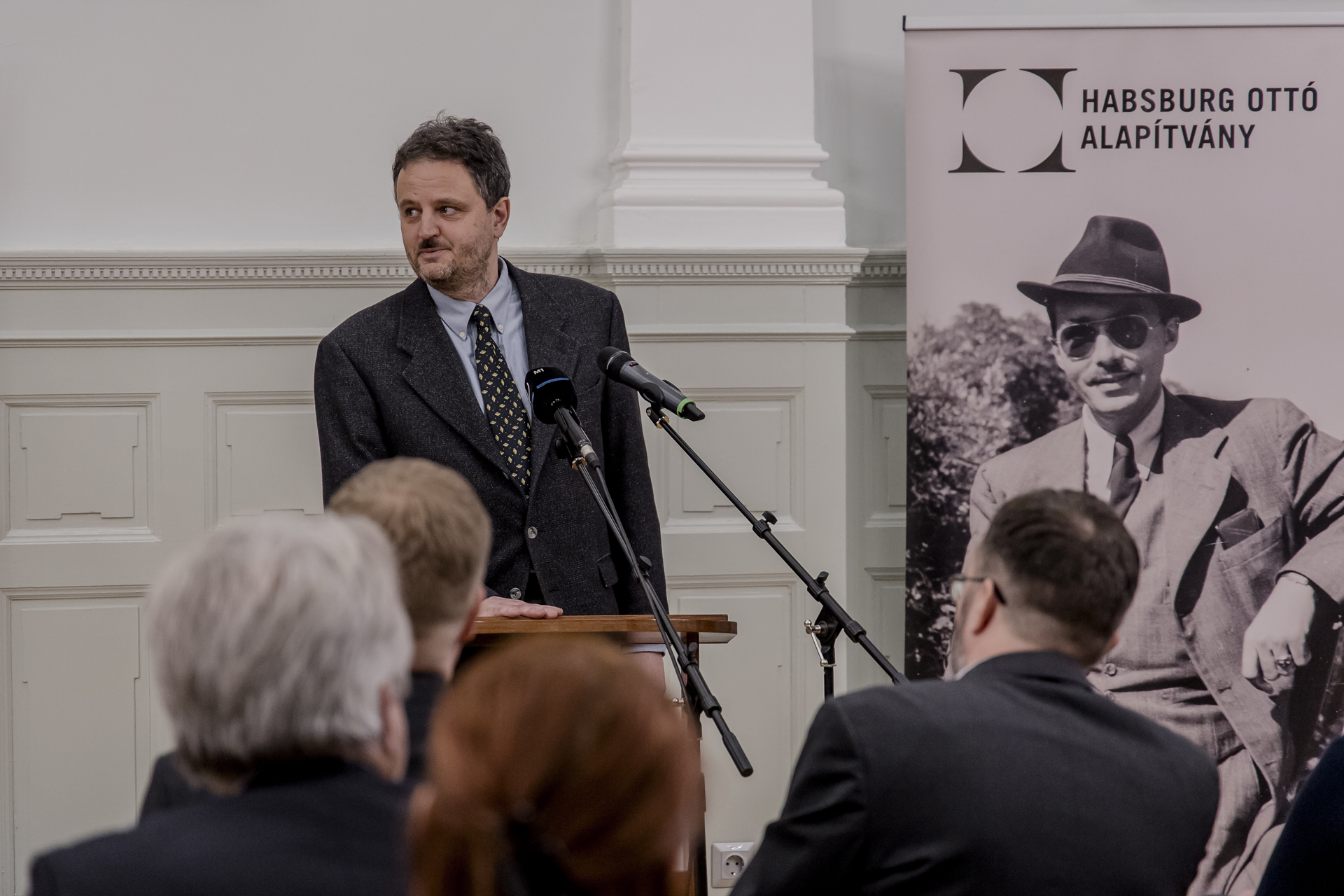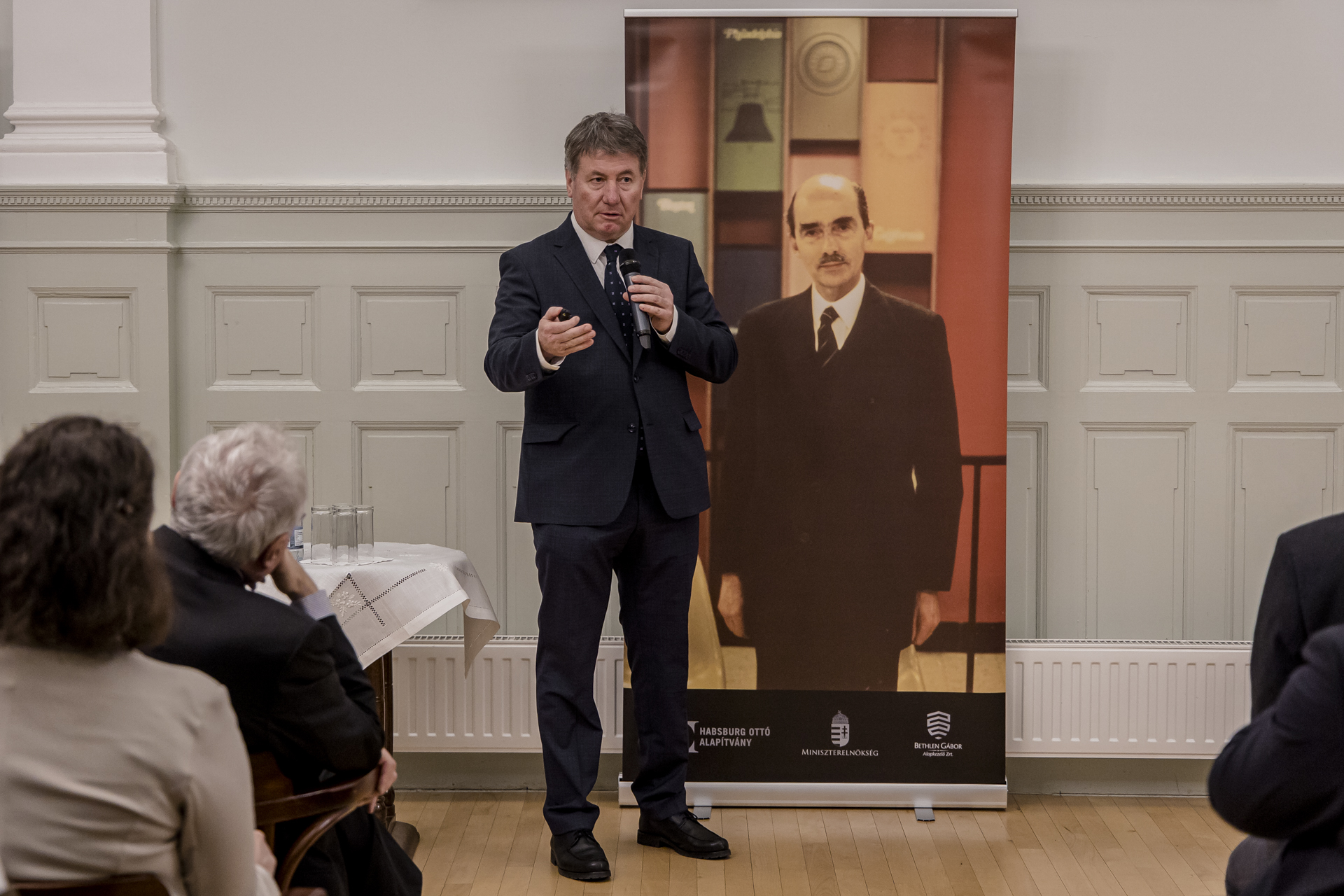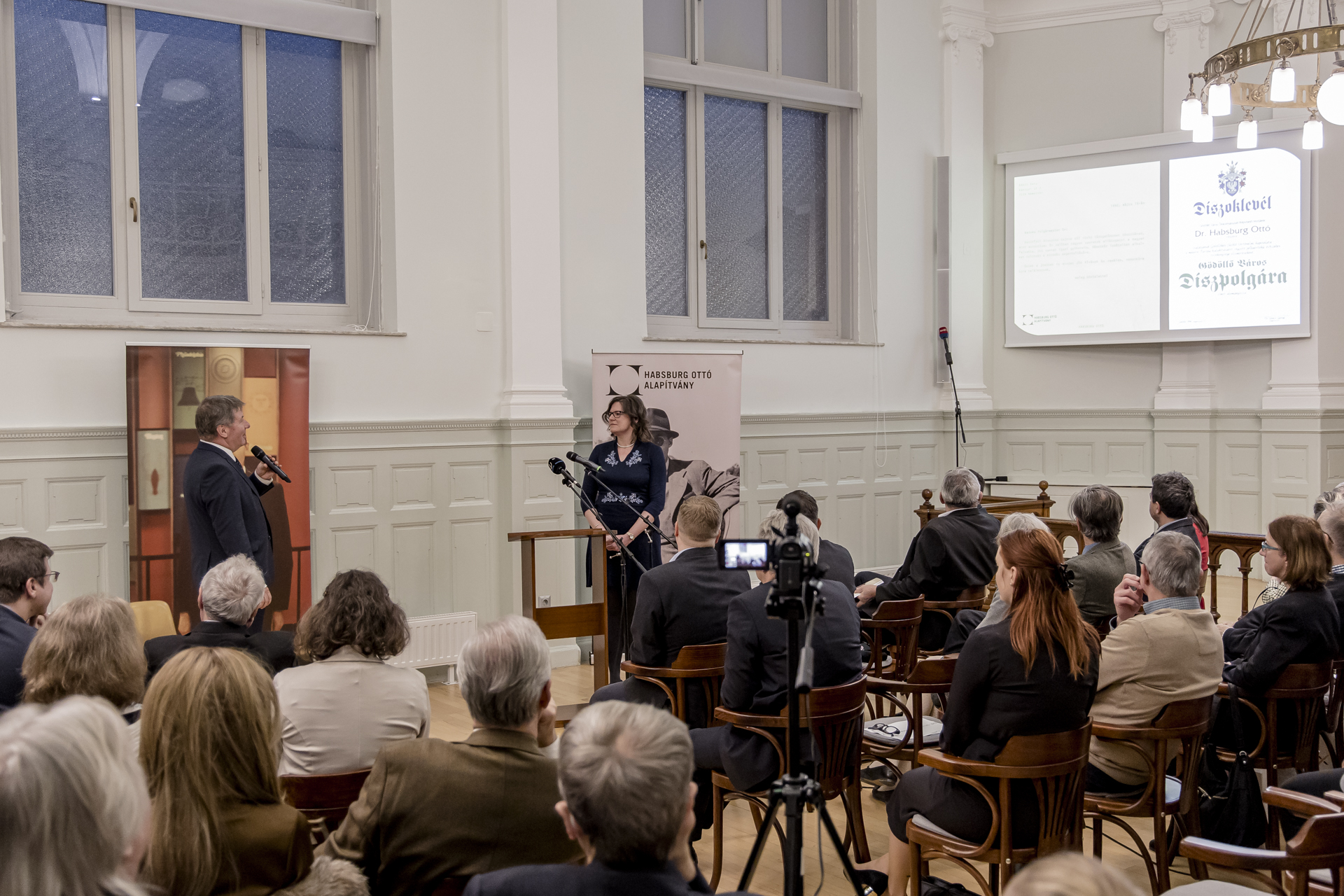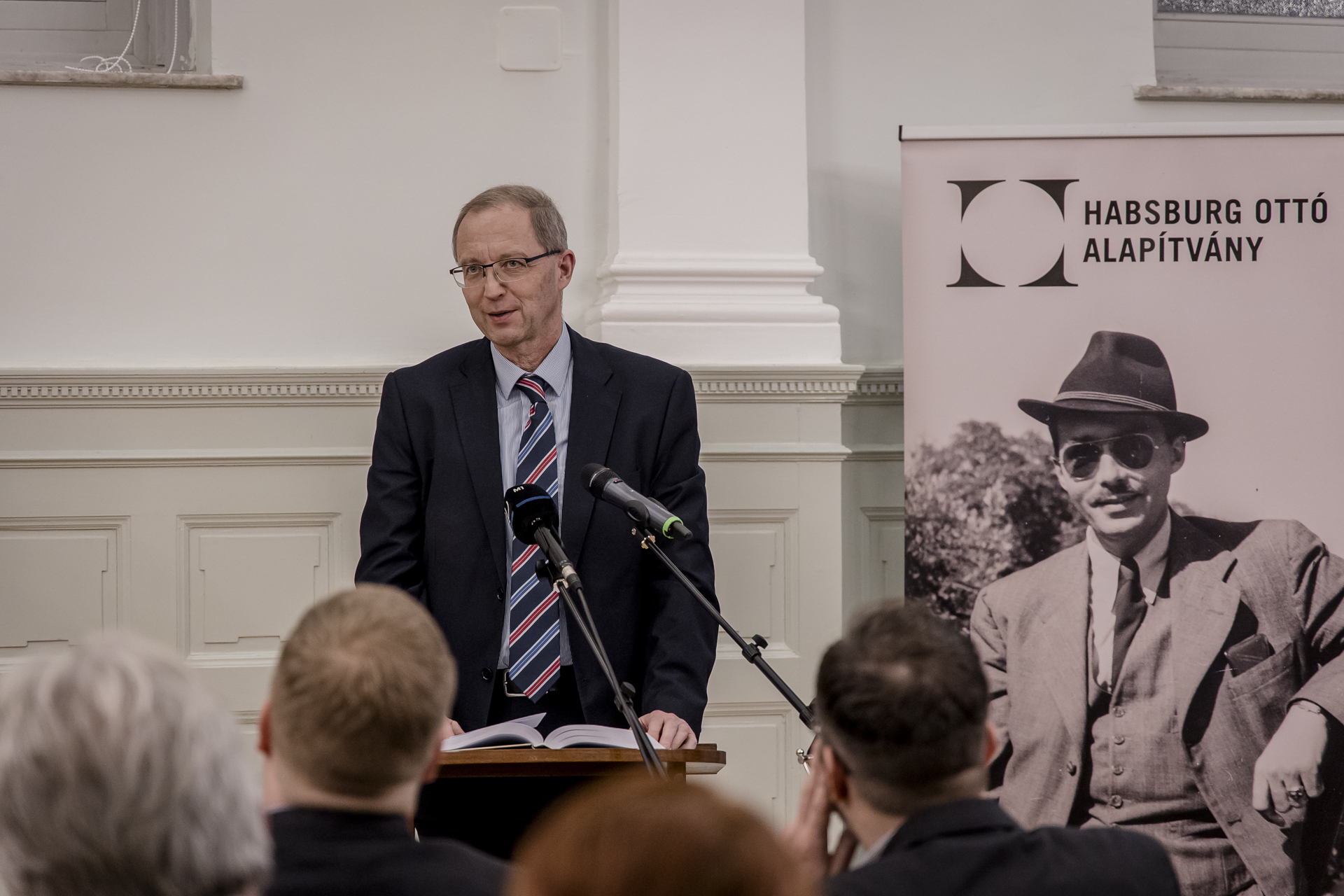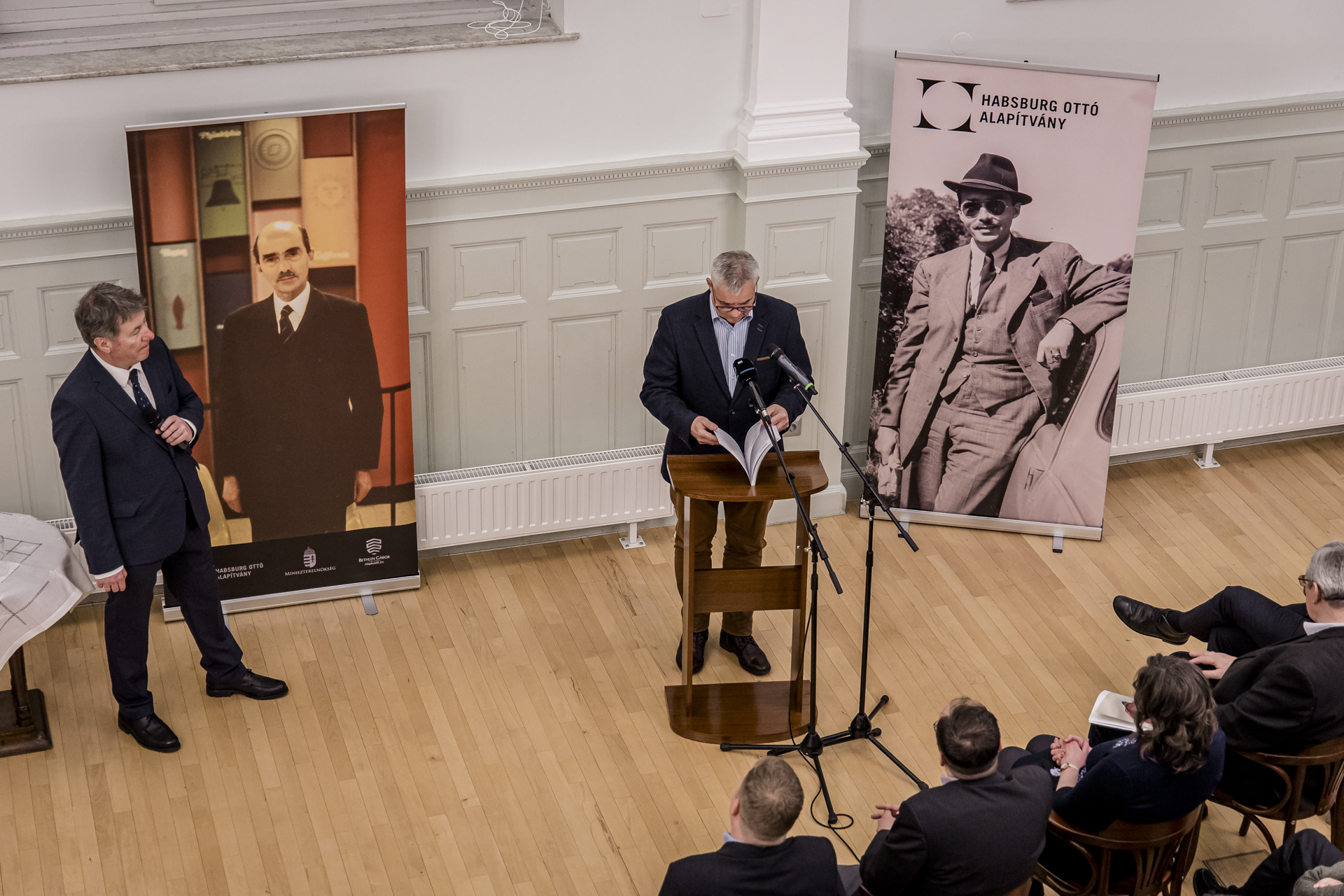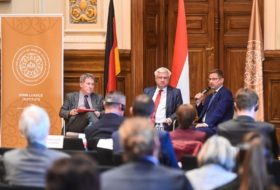The mission of the Otto von Habsburg Foundation is to preserve, organise and explore the intellectual heritage of its namesake – his correspondence, his collection of books, newspaper articles, photographs, cinematographic material and personal objects. At the same time, the Foundation is committed to making this invaluable historical and political documentation as widely accessible as possible, therefore launching an online database to make these resources available to the public. This was announced on 23 January at our event entitled Start to the Year in the Collection on the occasion of the Day of Hungarian Culture.
Gergely Prőhle, director of the Otto von Habsburg Foundation, greeted the audience. He explained that the Foundation started to process the legacy in 2019. Since then, we have developed the order of cataloguing, the basic structure of the archival system and created the methodology for digital access. He pointed out that, in addition to caring for the collection, we also need to be able to convey the intellectual heritage of our eponym. He also highlighted the Foundation’s publications abroad as a significant development in 2022, which have received several very positive responses. He referred to what the Hungarian language and culture meant to Otto von Habsburg: in many of the documents he had worked on, he referred to his Hungarian ties and considered the Hungarian language his second mother tongue. He had read Dezső Kosztolányi and Sándor Márai, as well as the poetry of Endre Ady, Sándor Petőfi, Ágnes Nemes Nagy and Sándor Weöres.
In his welcome speech, Gergely Gulyás, Minister of the Prime Minister’s Office, emphasised that the oeuvre of the last Hungarian heir to the throne is still remarkable “for all who are interested in our present, which is growing out of our past”. He highlighted that the work of the institution responsible for the legacy had reached a milestone: the time had come for the intellectual heritage to be made available on the World Wide Web in an accessible form to everyone. Gergely Gulyás, praising the life of Otto von Habsburg, stated that the heir to the throne “even with his changed status – or regardless of his status – followed the heritage and the best traditions of his ancestors, duty and service, and chose the struggles and fighting that these entailed. He fought against the totalitarian ideals and dictatorship of National Socialism and Communism for a Europe living in liberty and peace. This fight was often hopelessly lost in the 20th century, but those were victorious, who, like Otto von Habsburg, believed in freedom and in the unconditional respect for human dignity”.
The Foundation, which the Prime Minister’s Office funds, could also promote the values of Otto von Habsburg’s Christian Europe – resumed Gergely Prőhle, Director of the Foundation. He recalled that last year we held a diverse series of events to mark the 110th anniversary of the birth of Otto von Habsburg and the 100th anniversary of the passing of his father, King Charles IV.
The last Hungarian heir to the throne was presented to society through the documentary film By the Will of God, the most-watched Hungarian movie of 1989. One of the film’s writers, Gábor Hanák, recounted the story of the film’s creation to the audience.
At the event on Monday, held on the Day of Hungarian Culture, the collection and the digital platform that manages it was introduced along with our latest publications. At the event, our staff outlined the progress made so far in the thematic processing of the various collection areas – archival, library, photographic and artefact collections.
Zoltán Ólmosi, Collection Fellow and Senior Archivist, recounted the research and scientific results on Charles IV and Otto von Habsburg prior to the establishment of the Foundation. Gergely Fejérdy, Deputy Scientific Director, gave a brief presentation of the collection’s journey from arrival to the current processing state. Eszter Gaál-Barcs, Senior Archivist, spoke about Otto von Habsburg’s Hungarian-related correspondence, which was the first to be processed by the Foundation and is now gradually being made digitally accessible. István Gergely Szűts, Senior Archivist, drew attention to the conclusions from investigating the networks of contacts that play a significant role in Otto von Habsburg’s oeuvre and the aims of our Foundation. Archivist Anett Hammer-Nacsa provided a glimpse into the workshop secrets of exploring the German journal Zeitbühne, while our Librarian, Ferenc Vasbányai, described the structure of the book collection, the most interesting autographed volumes and Otto von Habsburg’s literary interests. Szilveszter Dékány, Senior Collection Fellow, presented the photograph section, emphasising that the pictures, taken using various techniques, cover a wide time frame. Our Archivist colleague Beáta Vitos-Merza spoke about the memorabilia of our namesake. Lastly, Eszter Kardon-Fábry, Archivist, presented the diaries of Archduchess Walburga and our exhibition at the Royal Palace of Gödöllő, which will be open until 1 April.
Antal Molnár, Director of the Institute of History at the ELKH Research Centre for the Humanities, delivered the closing remarks and spoke about the Central Administrative Office’s building of the Evangelical Lutheran Church in Hungary and its significance. In addition to our collection, the Podmaniczky-Degenfeld Library and the Péter and Gitta Esterházy Library are also located here.
The database, which is now available online, will gradually provide access to Otto von Habsburg’s correspondence, photographs, studies and publications. It has already become clear from the database organisation that Otto von Habsburg was in contact with many thousands of people; from the second half of the 1980s, the number of his correspondents in Hungary alone was estimated at around six thousand. The collection also includes a large number of photographs of him and his family, several hours of video footage and audio interviews, a library of 11,000 volumes in English, German, French and Hungarian, and a multilingual collection of articles comprising 7,000 documents.
The first of Otto von Habsburg’s legacies to be made available digitally on the newly launched online platform includes his Hungarian-language secretariat correspondence, part of his photographic collection and excerpts from video interviews conducted by Péter Bokor and Gábor Hanák in the 1980s.
We want to thank all our guests for their interest and participation in the event, and we hope to welcome many more visitors to the online platform too!
Photos: Tamás Totisz

